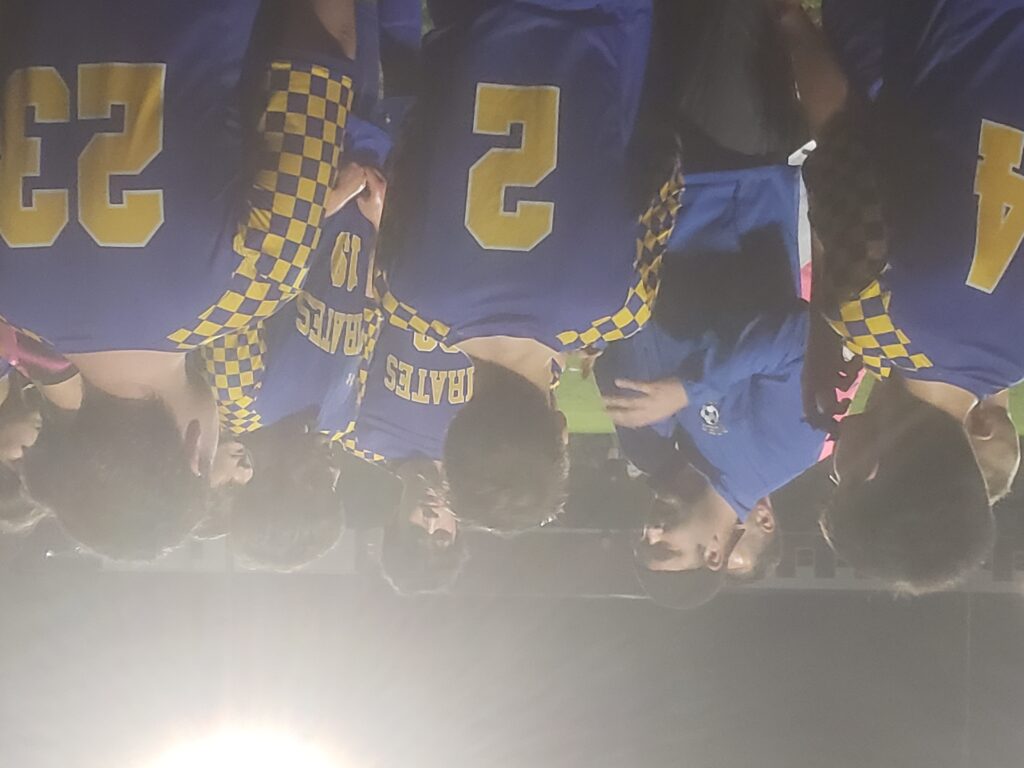
Some of Maine’s smaller schools are upgrading their sports facilities
By Ernie Clark, Bangor Daily News Staff
The recent surge of athletic complex upgrades aren’t limited to the bigger schools in eastern and central Maine.
The installation of artificial turf and a new eight-lane track at Cameron Stadium in Bangor this summer has garnered considerable attention for not only how the improvements might benefit student-athletes and residents of the Queen City but as a looming economic driver for the region.
Fields at Cony High School in Augusta and Gardiner Area High School have undergone similar investments, but improvements to athletic facilities at smaller locations like Piscataquis Community High School in Guilford and Orono High School are generating similar excitement as well as a healthy dose of team spirit.

With student enrollments continuing to decline at most Maine high schools and participation in interscholastic sports additionally dropping during the COVID-19 pandemic, facility upgrades are viewed as one possible way to get more kids back on the playing field.
“Hopefully we get more kids out for soccer next year because it’s really dwindling down around here,” said Trevor Hathorn, a senior on the PCHS boys soccer team. “Not a lot of people play anymore. Everything’s about video games now.”
The PCHS soccer team was the first to play under the new lighting system installed at the school’s rebuilt home field last Thursday night.
“I definitely think our team brought a lot more intensity into this game,” said PCHS junior soccer player Christian Homchuck. “We were really excited about finally being able to use these lights that we’ve been blessed with.”
Excitement also is brewing in Orono, where the football field has been resodded, some of the old lights have been replaced, an old grandstand has been replaced by a new press box and modern bleacher seating, and a new eight-lane track has replaced the previous oval surrounding the field. It had deteriorated to the point where the Red Riots hadn’t hosted a high school meet since 2010.
“It’s state of the art,” Orono athletic administrator Mike Archer said just a week after his school’s upgraded field hosted its first event, a middle school football game. “It’s everything we wanted in a championship venue and we can’t wait to show it off in the spring.”
Archer is optimistic that participation in Orono’s track and field program will rebound from a recent dip, though that drop hasn’t stopped the Red Riots from winning 10 Class C state championships in boys and girls outdoor track since 2011.
“Our teams continued to practice on [the old track] as it kept deteriorating,” Archer said. “But I would think just because people like new things we’ll have healthy numbers in the spring.”
Other motivations for the investments include providing a wellness outlet for the community at large and using the lights to increase the amount of time each day when the fields are available to be used.
“One of the beauties of these lights that’s going to be helpful is that when we have a varsity game at 4 o’clock in late September or early October, we can turn a bank of lights on afterward and another team can come in and practice,” PCHS athletic administrator Joe Gallant said.
More evening events may make games more exciting for student-athletes but more accessible to parents and other fans than games right after school.
“Two years ago we rented some portable lights for our homecoming game, and I bet we had 300 people here,” PCHS soccer co-coach Trey Gilbert said. “There was lots of excitement.”
The two sites also represent two different ways of financing such projects.
At PCHS, two local businessmen and former soccer teammates at the school paid for the main elements of the upgrades, the new lighting system and construction of a newly seeded, natural-grass field.
Gilbert, owner of Herring Brothers Meats in Guilford, purchased the lights.
“My grandfather played here. My father played here. I played here. My boys played here,” he said. “It’s definitely in our blood and we’ve always talked even since I was in high school about putting lights up. We finally got the opportunity to put them up and I think it’s a great opportunity.”
Gordon Contracting Inc. of Sangerville and its president and chief executive officer, Brian Howard, rebuilt the athletic field, from correcting an 11-inch imbalance between one corner of the field and the opposite end to hydroseeding the finished product.
“It worked well being able to dovetail our soccer field work with the lighting improvements that Trey provided,” said Howard, whose company also was the general contractor for the recent work at Cameron Stadium.
Howard said his company will return to the field next year to pave the six-lane track that surrounds the rebuilt field, and Gallant is spearheading a fundraising effort to cover the cost of spraying the paved track with a rubberized running surface.
At Orono, the cost of the athletic field upgrades were included in a $16.8 million borrowing package to pay for new construction and repairs at the town’s school buildings that was approved by voters in June 2019.
“It’s a community investment so we want to make sure the community gets to enjoy it, so obviously they’re going to recreate here,” Archer said.
Archer also envisions the site being used not only for regular-season sporting events, but as a championship venue for track and field with its seating capacity of nearly 1,000 once two small sets of bleachers are added to the existing set on the visitors’ side.
He hopes the school might host the Penobscot Valley Conference small-school outdoor track championships next spring to provide a template for hosting larger events in the future.
“In terms of this being a state championship venue, no question,” Archer said.